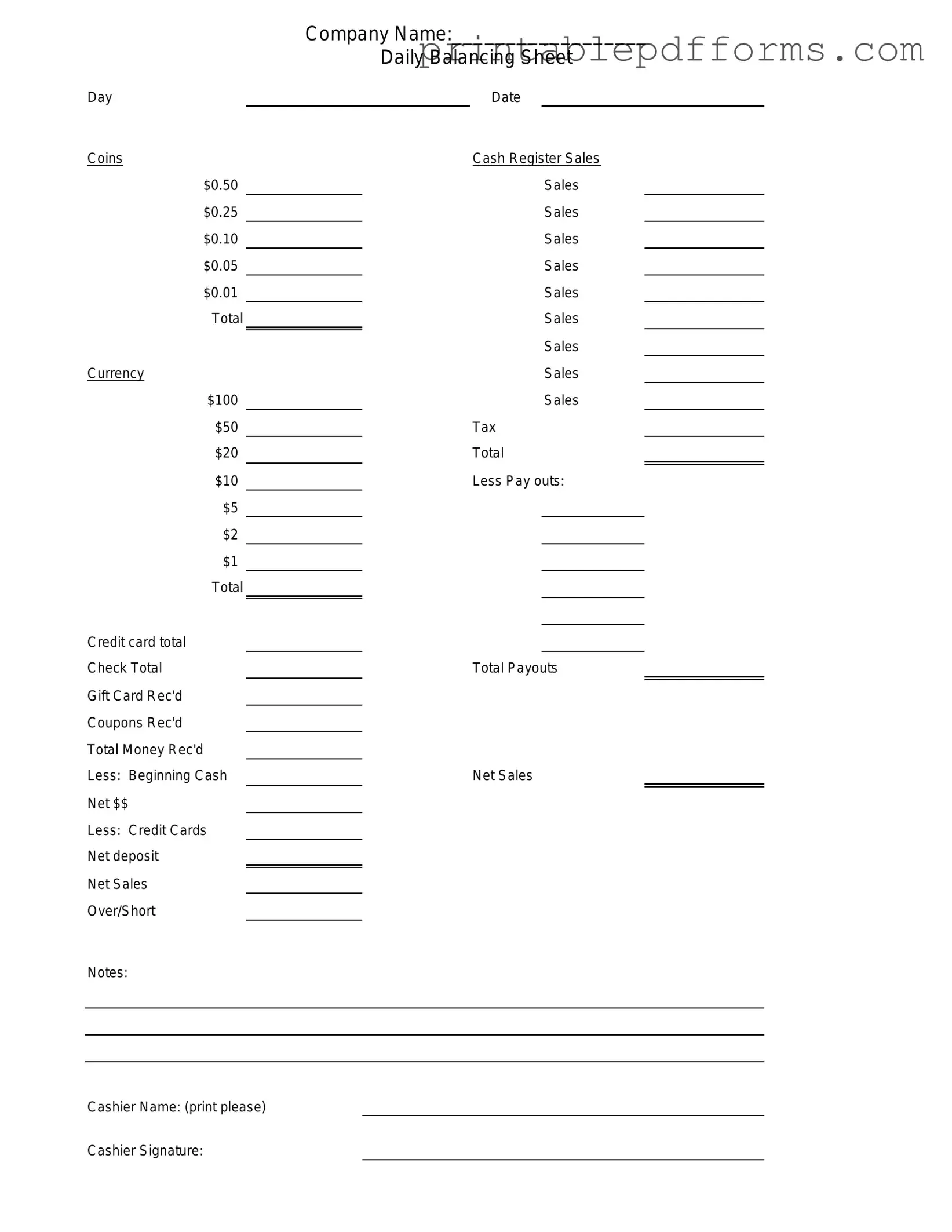Fill a Valid Cash Drawer Count Sheet Form
The Cash Drawer Count Sheet is a vital document used by businesses to accurately track the cash in their registers at the end of a shift or day. This form helps ensure that all transactions have been accounted for and can assist in identifying discrepancies. To maintain financial integrity, it’s essential to fill out this form diligently; click the button below to get started.
Create This Document Online

